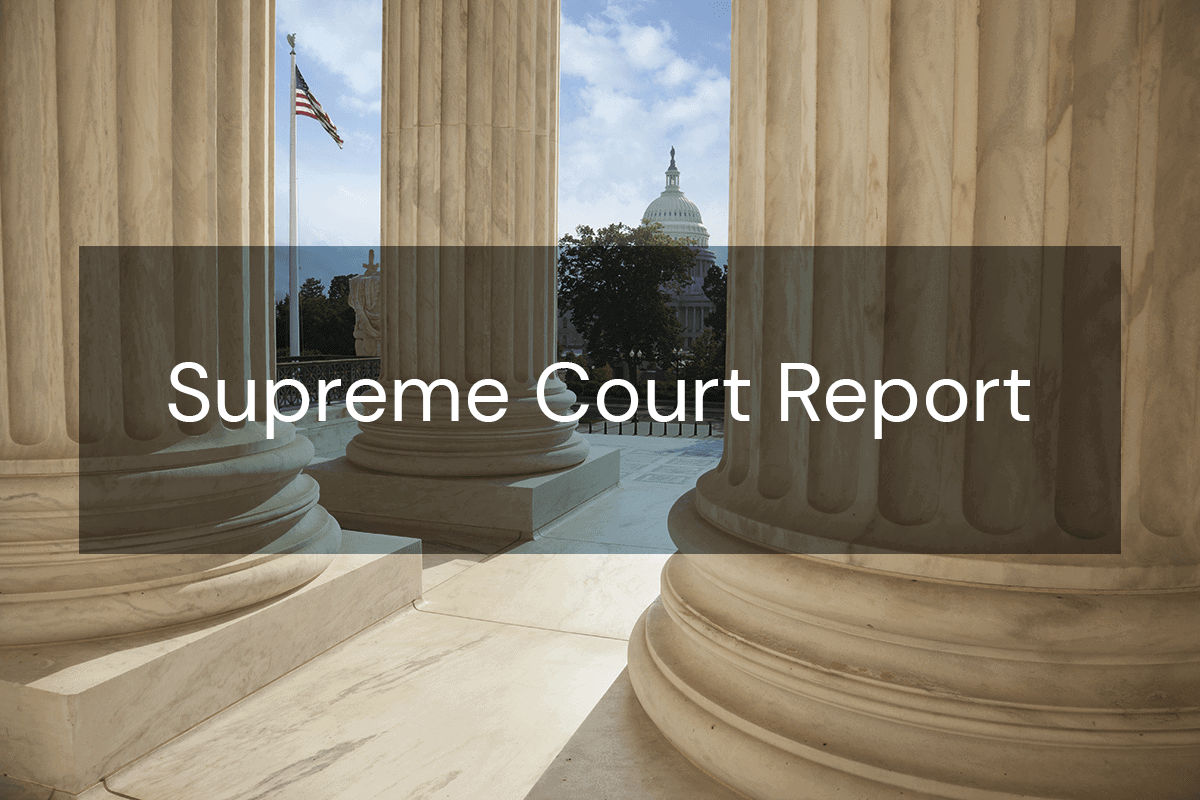-
 Director, Center for Supreme Court AdvocacyNational Association of Attorneys General
Director, Center for Supreme Court AdvocacyNational Association of Attorneys General

This Report summarizes an opinion issued on January 23 (Part I); and cases granted review on December 27, 2022, and January 13, 2023 (Part II).
Case Granted Review: Pugin v. Garland, 22-23; Garland v. Cordero-Garcia, 22-331
Pugin v. Garland, 22-23; Garland v. Cordero-Garcia, 22-331. These consolidated cases involve the Immigration and Nationality Act (INA), which provides that a noncitizen who is convicted of “an offense relating to obstruction of justice” is subject to mandatory removal. The Court will decide whether that statutory phrase covers a criminal offense that does not involve interference with an ongoing investigation or official proceeding.
The first case involves petitioner Jean Francois Pugin, a Mauritius citizen who has been a lawful permanent resident of the United States since 1985. In 2014, he was convicted of being an accessory after the fact to a felony in violation of Virgnia law. The Department of Homeland Security initiated removal proceedings against Pugin based on his conviction, reasoning that he committed “an offense relating to obstruction of justice” under the INA. Pugin moved to terminate the removal proceedings, arguing that “an offense relating to obstruction of justice” requires interference with an ongoing investigation or proceeding. That element is not present in the Virginia statute of conviction. The Immigration Judge denied Pugin relief, and the Board of Immigration Appeals (BIA) affirmed. The BIA reasoned that for a conviction to qualify as “an offense relating to obstruction of justice,” it need only concern interference with a reasonably foreseeable investigation or proceeding. A divided panel of the Fourth Circuit affirmed, applying Chevron deference to the BIA’s interpretation of the “obstruction of justice” language. 19 F.4th 437.
The second case concerns respondent Fernando Cordero-Garcia. He is a Mexican citizen who has been a lawful permanent resident of the United States since 1965. In 2009, Coredero-Garcia was convicted of dissuading a witness from reporting a crime. Two years later, the Department of Homeland Security charged that he was subject to removal under the “obstruction of justice” provision of the INA. The BIA sustained the Immigration Judge’s order for removal. It rejected Coredero-Garcia’s contention that “an offense relating to obstruction of justice” requires interference with an ongoing investigation or proceeding, an element lacking in the California statute of conviction. Bound by its recent precedent, a divided panel of the Ninth Circuit ultimately agreed with Cordero-Garcia that the INA’s “obstruction of justice” provision requires a nexus to a pending investigation or proceeding. 44 F.4th 1181.
Pugin and Cordero-Garcia argue in their petitions that “an offense relating to obstruction of justice” unambiguously requires interference with an ongoing investigation or proceeding. They contend that when Congress adopted the “obstruction of justice” language in 1996, that term had an established federal-law meaning that demanded such interference. Pugin and Cordero-Garcia point to the Court’s nearly 130-year-old decision in Pettibone v. United States, 148 U.S. 197 (1893), for support. There, in interpreting an early version of the federal statute criminalizing obstruction of justice, the Court stated that “obstruction can only arise when justice is being administered.” (Emphasis added.) Pugin and Cordero-Garcia also draw support for their interpretation from more recent versions of the federal statute on obstruction of justice found in Chapter 73. When it was codified in 1946, Chapter 73 listed six offenses, each of which involved interference with ongoing proceedings. When Congress later added witness tampering to that list, it expressly stated that there was no pending-proceeding requirement for that section. Pugin and Cordero-Garcia submit that such language was only necessary because the default rule was that obstruction of justice required interference with an ongoing investigation or proceeding. Against this backdrop, they invoke the “cardinal rule” of statutory construction that when Congress uses a term of art like obstruction of justice, “it presumably knows and adopts the cluster of ideas that were attached to [the term] in the body of learning from which it is taken.” Air Wis. Airlines Corp. v. Hoeper, 571 U.S. 237, 248 (2014).
The Government contends that an offense does not need to involve an ongoing investigation or proceeding to constitute “an offense relating to obstruction of justice” under the INA. For support, it notes that Merriam-Webster’s Dictionary of Law defines the term “obstruction of justice” to mean “the crime or act of willfully interfering with the process of justice.” As the Government points out, the definition makes no mention of an ongoing investigation or process. The definition also provides examples of obstruction of justice, including the act of influencing or threatening a potential witness. That offense, the Government submits, “plainly need not involve an already-pending proceeding or investigation.” As for Pugin and Cordero-Garcia’s reliance on Chapter 73, the Government argues that “many Chapter 73 offenses can be committed before any proceeding has begun,” and “various other Chapter 73 offenses can be committed after a proceeding has ended.” Because the offenses listed in Chapter 73 demonstrate that obstruction of justice may occur before, during, or after a proceeding, the Government maintains that Chapter 73 supports its interpretation of the INA.



